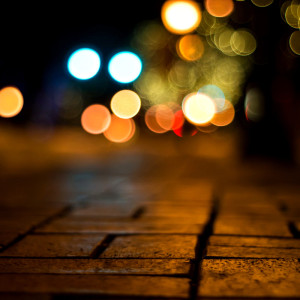Bokeh

The photographic effect of parts of a scene appearing out of focus in a captured photograph. It is commonly used to "blur" the background in a portrait.
Bokeh looks distinct from blur to a trained eye.
In traditional photography, a significant bokeh effect requires a physically large-diameter lens, as compared to a phone camera lens. Phones with larger lenses and sensors can produce a limited bokeh effect.
Many phones can simulate bokeh using software. This is often called portrait mode. A simple version attempts to detect the background and simply blur it. Better software produces something closer to traditional bokeh, including varying levels of bokeh at different distances from the lens.
Some portrait modes detect human faces and blur everything else. (Others also detect pet faces.) However some phones have "portrait" mode for faces and "bokeh" mode for everything else.
A large variety of different technologies are used by phones to measure depth (distance from the lens) in photos, which in turn can be used to create a good bokeh effect. The best depth sensing utilizes a dedicated active depth sensor, which may use a tiny infrared projector coupled with an infrared camera. Depth information can also be gathered using two standard cameras side-by-side (using something like stereo vision), or sometimes by a single camera with "dual-pixel" technology.
Last updated Aug 23, 2022 by Rich Brome
Editor in Chief Rich became fascinated with cell phones in 1999, creating mobile web sites for phones with tiny black-and-white displays and obsessing over new phone models. Realizing a need for better info about phones, he started Phone Scoop in 2001, and has been helming the site ever since. Rich has spent two decades researching and covering every detail of the phone industry, traveling the world to tour factories, interview CEOs, and get every last spec and photo Phone Scoop readers have come to expect. As an industry veteran, Rich is a respected voice on phone technology of the past, present, and future.









